Once your museum’s website is officially online and its “news” section is regularly updated, you need to co-mmu-ni-cate. Sending out a newsletter is a great way to let your contacts know about your establishment’s events and highlights. Unlike email campaigns, which have a commercial goal and are sent on a one-off basis, newsletters are informative and sent out regularly. The aim is to maintain a relationship with your audiences and build their loyalty.
Although this communication tool is widely popular with professionals thanks to its effectiveness, its production is not a trivial undertaking. In order to achieve your objectives, you need to send the right message and the right content at the right time. Discover our tips to make the most of the opportunities provided by a newsletter… and boost your communication!
Start by choosing the tool that best fits your needs
There are tonnes of email marketing software options, but no ideal solution: we recommend choosing one that is the best match for your objectives and needs. Free versions are admittedly advantageous to start with, but they limit sending volumes, and the number of contacts in some cases. They can also convey a less professional image of your establishment by restricting the possibility to customise emails. Some of the criteria you need to include in your search are: contact segmentation, creation of subscription forms on your website (which enable you to populate your contact database), responsive design, drag & drop function, use of a list of pre-set and customisable templates, and lastly, access to performance figures for your campaign.
To take things one step further, why not look into the possibility of an SMS campaign, transactional emails, Marketing Automation, and the creation of a landing page on your website. Remember that an all-in-one tool may often end up being less costly than several tools combined, in addition to the fact that everything is centralised in a single place on the same interface. Anticipating your needs based on your strategy is therefore key.
To give you an idea, here is a comparison of the different email marketing solutions (in French) by function and price range.
Build your opt-in contact database
Once you’ve chosen a tool, the next step is to create then insert a subscription form on your website. This form not only needs to allow you to collect the particulars of your new contacts (email address, first name, surname, etc.), but above all to obtain their consent to receiving your newsletter and transferring their data securely (GDPR). Two opt-in options exist: single and double. Single opt-in means that your Internet users enter their email address and check a box, after which their newsletter subscription is automatically validated. Double opt-in sends a subscription confirmation by email; the process is therefore longer but it guarantees valid addresses, confirms your Internet users’ desire to receive your messages and also allows you to initiate first contact (an opportunity to present your establishment in more detail, for example).
Your audiences can’t automatically guess that your newsletter has been launched. So you need to make your subscription forms visible: in an insert on your home page, on your contact page, in a header or footer, for example. To avoid being too insistent, opt for an original and well-thought out message (a promise, for example) and mention how often newsletters will be sent. At the same time, don’t hesitate to invite your other contacts as well as your social network community to sign up.
Push relevant, interesting and powerful content
Your newsletter is not a magazine article, but a gateway to your website. The content must be concise, while giving enough away to whet your Internet users’ appetite.
Your cultural programme and your blog articles are fantastic sources of information that you can systematically promote in your communication. If you have an e-store, don’t hesitate to present your new by-products in a dedicated insert. Break them down into sections (“inspiration”, “unmissable”, “new features”, for example) and make sure to place particular importance on the title, image, description, and the Call-to-Action button that redirects to the full content published on your website. At the same time, make sure to prioritise your content starting with the most important each time; this sets a clear reading order. Include your establishment’s name, logo and contact details at the bottom. Lastly, add an unsubscribe link at the end of the email – remember, it’s mandatory!
Choose a simple design in line with your website’s graphic charter and keeping a text/image balance. Also, check that your message can be adjusted to all screens, given that more and more Internet users read their emails on their mobile.
However many elements you want to include in your newsletter, it’s important to maintain a regular sending frequency in order to build a lasting relationship with your contacts: monthly, bi-monthly, weekly, etc. The key thing it to emphasise quality over quantity to make sure your newsletter delivers real value each time!
Make your email subject an incentive to open it
The subject is the first thing your contacts see. In other words, it decides whether or not they open your newsletter. The aim is not to repeat the information contained within the email, but to use a tagline to grab readers’ attention and act as a call for action, ensuring it is connected to the content so as not to disappoint readers. Make sure not to exceed 50 characters as most messaging services do not show the text beyond this limit.
If your tool allows for it, it is entirely in your interest to capitalise on the pre-header to increase your open rate. If it can’t be manually modified, the pre-header uses the first sentence of the email, shown to the right or below the subject in an email service. Take the opportunity to add to your subject or, conversely, introduce new information you feel is relevant.
Whatever the case, try out different approaches to hone your message. A/B testing is an excellent way to determine your audiences’ preferences and optimise the content of your newsletter.
In a second article, we’ll look at different tips for analysing the performance of your newsletter and drawing the right conclusions!



